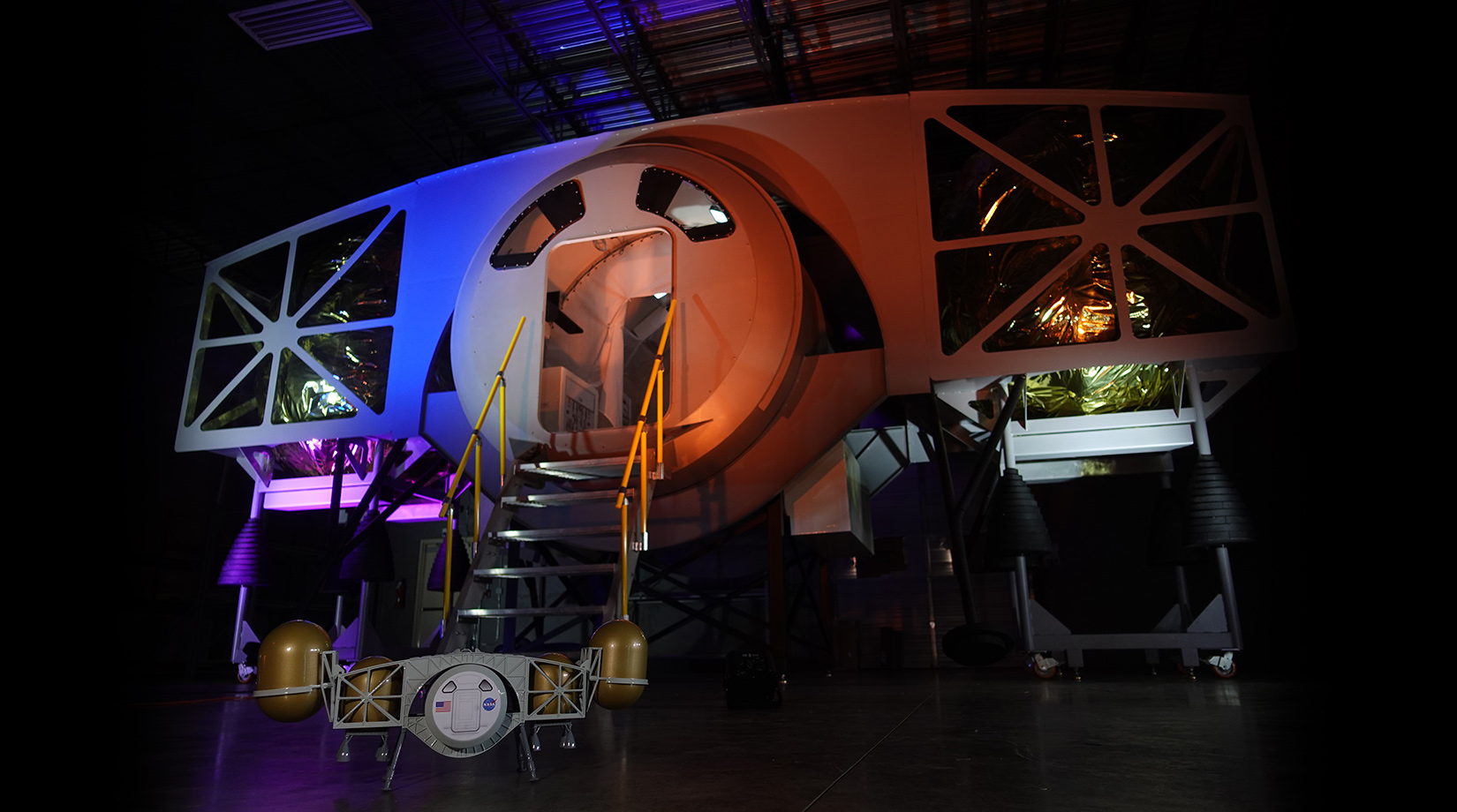Will this lander carry humans to the moon? Dynetics unveils lunar mock-up

Dynetics has built a full-scale mock-up of the lander it hopes will soon be carrying NASA astronauts to the moon.
The Alabama-based company unveiled the model of its proposed human lunar lander on Tuesday (Sept. 15). The low-fidelity prototype — which includes a crew module, deployable solar arrays and propellant tanks for lunar descent and ascent — will be used to inform and refine the final lander design.
"Our team is pleased to bring this system to life," Kim Doering, Dynetics vice president of space systems, said in a statement. "Our reusable, sustainable approach is ready to support a safe and successful hardware delivery for NASA's mission."
Related: NASA unveils plan for Artemis 'base camp' on the moon beyond 2024
That mission, broadly speaking, is NASA's Artemis program of crewed lunar exploration. Artemis aims to land two astronauts near the moon's south pole in 2024 and establish a permanent, sustainable human presence on and around Earth's natural satellite by 2028.
NASA plans to get Artemis astronauts off Earth using its Orion capsule and Space Launch System (SLS) megarocket. But the agency is relying on private industry to ferry crewmembers from lunar orbit down to the moon's gray dirt and back up again. (Over the long haul, NASA wants these surface sorties to depart from a small, moon-orbiting space station called Gateway. But the 2024 mission may not use Gateway.)
In April of this year, the space agency announced that it had awarded contracts to three private groups — Dynetics, SpaceX and The National Team, led by Jeff Bezos' Blue Origin — to develop their crewed lander concepts. The deals, worth a total of $967 million, are funding 10 months of work.
Breaking space news, the latest updates on rocket launches, skywatching events and more!
In early 2021, NASA is expected to select one or more of the three lander concepts for further development and testing. The agency wants at least one of the spacecraft to be up and running by 2024, when the Artemis 3 mission is scheduled to make its historic lunar landing. (Artemis 1 and Artemis 2 will be uncrewed and crewed trips around the moon, respectively. They're targeted to launch in late 2021 and 2023.)
NASA will procure lunar landing services from the company or companies whose landers make it all the way through to operational flight. The model is similar to that employed by the agency's commercial cargo and commercial crew programs, which buy rides aboard private spacecraft to and from the International Space Station.
SpaceX plans to use its Starship Mars-colonizing system for the moon-landing work. The National Team's design incorporates elements of Blue Origin's Blue Moon lander, Northrop Grumman's Cygnus cargo spacecraft and NASA's Orion capsule, for which team member Lockheed Martin is the prime contractor.
The four-astronaut lander being developed by Dynetics, a subsidiary of technology and engineering company Leidos, is about the same size as the Apollo lunar lander, Dynetics representatives said.
The spacecraft will launch atop a United Launch Alliance Vulcan Centaur rocket. Three Vulcan Centaur launches will be required for each mission, in fact — one each to loft the lander and its two external fuel tanks, Dynetics representatives said on Tuesday (Sept. 15) during a webinar hosted by the American Institute of Aeronautics and Astronautics.
Dynetics plans to launch an uncrewed demonstration mission showcasing the required technologies, including off-Earth refueling, sometime before Artemis 3 lifts off, Doering said during the webinar.
Mike Wall is the author of "Out There" (Grand Central Publishing, 2018; illustrated by Karl Tate), a book about the search for alien life. Follow him on Twitter @michaeldwall. Follow us on Twitter @Spacedotcom or Facebook.

Michael Wall is a Senior Space Writer with Space.com and joined the team in 2010. He primarily covers exoplanets, spaceflight and military space, but has been known to dabble in the space art beat. His book about the search for alien life, "Out There," was published on Nov. 13, 2018. Before becoming a science writer, Michael worked as a herpetologist and wildlife biologist. He has a Ph.D. in evolutionary biology from the University of Sydney, Australia, a bachelor's degree from the University of Arizona, and a graduate certificate in science writing from the University of California, Santa Cruz. To find out what his latest project is, you can follow Michael on Twitter.
